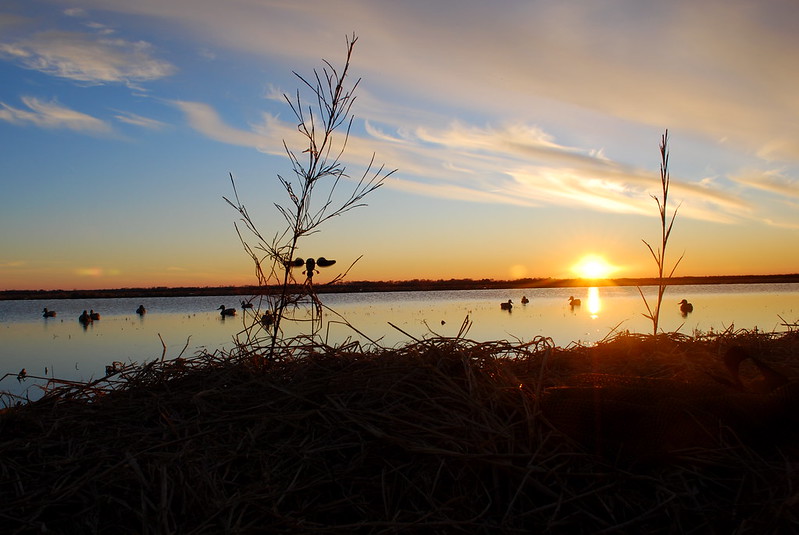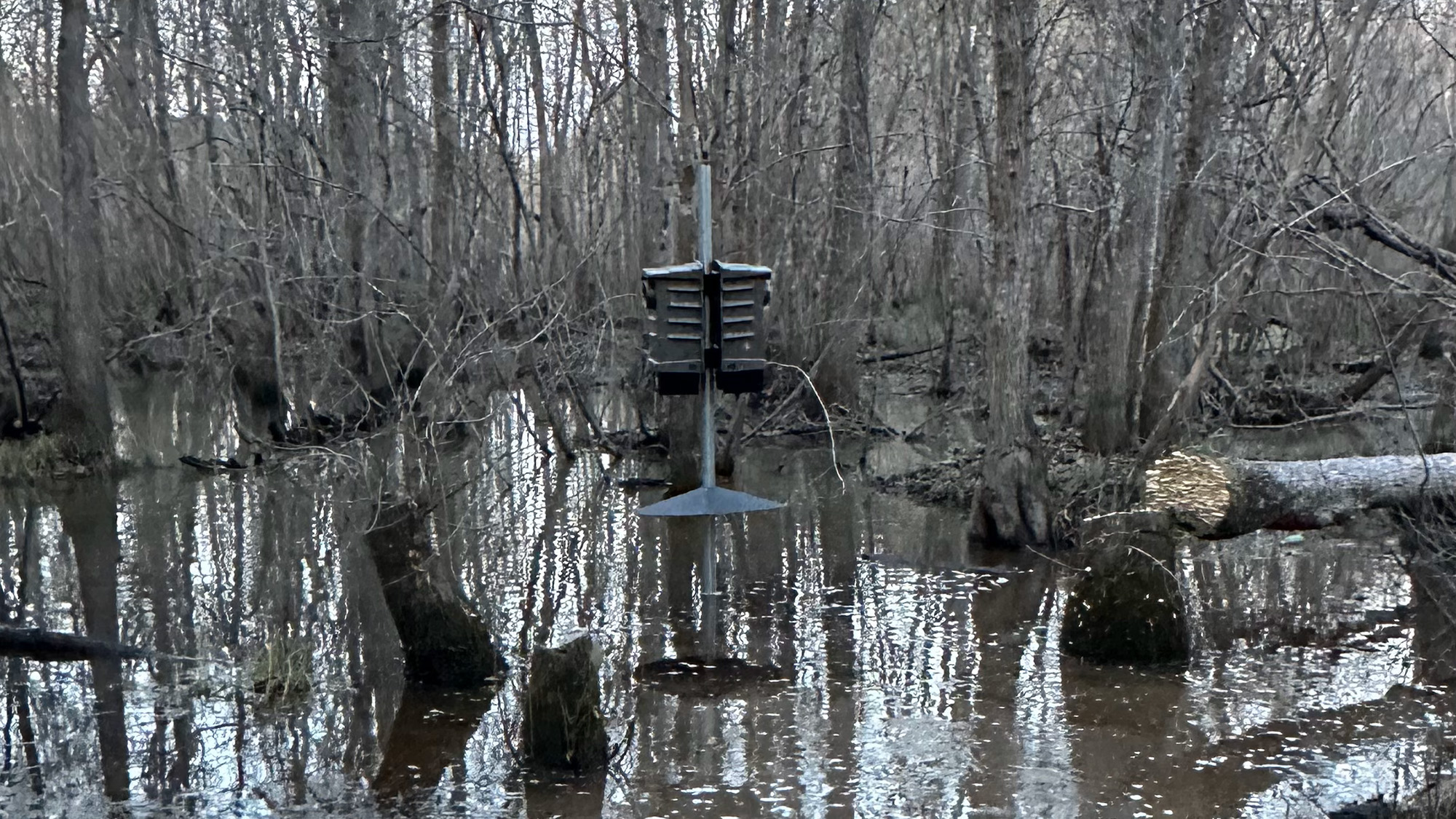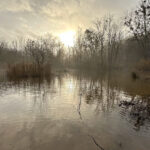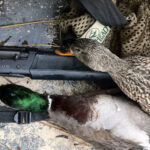Duck hunting is a popular tradition across many states in America, with over 1 million active hunters pursuing waterfowl each year. The sport generates over $2.3 billion for local economies annually.
There are four major duck migration flyways that the birds follow between their northern breeding grounds and southern wintering habitats:
Let us look at the top 10 best duck-hunting states for you to head over to this season!
Arkansas

Stuttgart, Arkansas, located along the Mississippi Flyway, is nicknamed the “duck and rice capital of the world.” Richlands offer prime food sources that attract ducks migrating to wintering grounds. Mallards are the most popular duck species pursued. Arkansas also hosts an incredible diversity of duck species – over 24 in fact. Mallards, wood ducks, teal, and other puddles thrive in their environs.
When combining positive harvest rates of 1.1 million ducks in 2023, hunter success of 17.2 birds per hunter, and tradition, Arkansas is great for overall quality year in and year out.
Louisiana
Louisiana is one of the most vital winter migration zones for ducks in America, according to state wildlife agencies. Blue-winged teal and green-winged teal are commonly hunted species. The Cajun culture and cuisine surrounding duck hunting are iconic here.
As ducks and geese push from summer nesting grounds in the Northern U.S. and Canada, hundreds of thousands settle into Louisiana’s fertile deltas and wetlands to regroup and feed.
The state boasts over 8,000 square miles, ideally suited for dabbling ducks. This advantage – being the last major stopover before birds disperse along the Gulf Coast or turn back north in spring – guarantees sky-darkening waterfowl numbers.
Generations of Cajun hunters keep a close watch on this seasonal influx. Public lands offer access to the famed currents of duck highways through cypress sloughs and fresh marshes. Louisiana had nearly 600,000 ducks harvested in 2023, with a per-hunter average reaching almost 17.
Missouri
In 2023, state conservation officials invested $10 million into improving Missouri’s historic wetlands and waterfowl habitat, ensuring duck hunting opportunities continue. Mallards make up the bulk of the yearly duck harvest.
The rivers bordering it – the Missouri and the Mississippi – have facilitated waterfowl migrations for ages through the Heartland. Their pinched convergence in Missouri makes for a bottleneck area where ducks and geese concentrating along these flyways get funneled down towards wintering grounds. This consistent phenomenon makes Missouri a reliable producer year after year.
Tracts of public hunting lands take advantage of these migration patterns by offering access to hunters hoping to intercept ducks dropping into fields to rest and feed. Ongoing wetlands conservation projects spearheaded by Ducks Unlimited ensure quality habitats remain across Missouri for generations of future waterfowl and the passionate hunters pursuing them.
North Dakota
North Dakota sits within the Central Flyway duck breeding grounds and is often the first state ducks reach when migrating south from Canada. Over-the-counter licenses allow ample DIY hunting prospects on public lands and private lands enrolled in PLOTS.
The Prairie Pothole region that covers much of it resembles an ideal duck breeding ecology – temporary wetlands and native grasslands dotting the landscape. This allows duck numbers to explode come springtime. Even in dry years, enough habitat remains to sustain high populations that migrate south through the Central Flyway over North Dakota again.
These early cold-weather migrants furnish tremendous hunting action. Over-the-counter licenses are available for non-residents, and ample public land access options exist for hunters across North Dakota through state programs opening up private acres. Almost 350,000 ducks were harvested here in 2023.
California
California’s massive size, varied geography, and abundance of wetlands up and down the state lead to thriving, huntable duck populations. The 30+ species provide diverse hunting opportunities. The Pacific Flyway brings birds migrating between Alaska and South America.
In terms of habitat, what other state can offer the Pacific Coast, Central Valley, high desert, and Sierra Nevada range all within its borders? Each region attracts and sustains different ducks due to the extremes.
Surf scooters, brant, and longtails ride the saltwater waves, while Central Valley rice farms and reservoirs host more traditional mallards, gadwall, widgeons, and pintails inland during winter. Band-tailed pigeons frequent oak meadows on eastern foothill edges, too.
The outcome is this diversity, with California bagging the most species nationwide – over 30 in most years. Its harvest numbers back this up, with 2023 reaching 900,000 birds. Much of this hunting opportunity is funneled through state wildlife areas and national refuges tailored to waterfowl.
From legendary sites like Sacramento NWR to overlooked Gray Lodge WA, there exists something for all interests to take advantage of.
Texas
Huntable duck numbers across interior wetlands and along the Gulf Coast make Texas a great destination each year. Hunting often takes place in zones with differing season dates and regulations based on duck populations.
Texas has nearly 900,000 ducks harvested in 2023. Its reputation holds up for waterfowl hunters as well. Coastal areas like the Laguna Madre provide secluded mangrove and saltwater flats where dabblers flock up by the thousands.
Inland along the Gulf Prairies and Marshes, freshwater wetlands nourish returning birds from Northern climes. Up through the Panhandle Playa Lakes, a patchwork of seasonal ponds signals a sanctuary for migrating ducks weary from mountain passes.
What surrounds these wetlands across Texas amplifies this appeal even more – acres of corn, wheat, and other planted crops offer endless food sources to pair with all that water. The combo has spelled duck-hunting success for ages here.
Public land access remains limited due to vast private land holdings, but persistence pays off for those researching zones, scouting diligently, and knocking on doors.
Just one thing before you go duck hunting in any of these states: you need to know how to use a duck call properly!
Kansas
Kansas has an ideal geography for migrating ducks with fields, wetlands, rivers, and rolling terrain they can easily land in and feed. Public lands managed for waterfowl production see large concentrations of ducks during migrations to winter grounds further south.
Kansas’s landscape is tailored perfectly to its annual life cycle. Criss-crossing its heartland lies smaller tributaries, oxbow lakes, sand-lined rivers, and countless wetlands, creating immense habitat, especially in the northeast quadrant.
Mallards and pintails thrive in these pockets on native prairie and agricultural field edges while traveling south via the Central Flyway. Impressive numbers accumulate in legendary sites like Cheyenne Bottoms Wildlife Area – a 41,000-acre marsh attracting tremendous flocks when conditions align just right.
What surrounds these Kansas wetlands draws birds into them as well – planted sorghum, corn, and other crops furnish high-calorie fuels. Hunters regularly access public lands habitats to intercept mass duck migrations along the big rivers like Missouri and Kansas.
Infrastructure development directly benefits continued population stability, with recent projects by Ducks Unlimited (a non-profit organization) and Delta Waterfowl conserving over 9,300 acres of existing wetlands in 2022-2023 alone.
For hunters looking for public lands closer resembling native terrain versus flooded ag fields, Kansas satisfies through diversity nearly on par with states out west. Over 180,000 total ducks were harvested here in 2023.
Washington
Washington’s prime positioning in the Pacific Flyway exposes it to many duck species from Alaska down to Mexico. Public land access gets hunters into both interior and gorgeous coastal wetland habitats full of waterfowl each season.
For migratory ducks and geese, Washington offers temperate rainforests full of forage and large inland Columbia Basin lakes to winter over on — essentially an avian paradise. Its geography also allows for Puget Sound coastal environs alongside Eastern farmlands, which provide habitat as the migration corridors dip down through the Pacific Flyway each autumn.
Snow geese, dabbling mallards, diving ringnecks, goldeneyes, buffleheads, mergansers, and even harlequin ducks all come to Washington on their journeys.
Both inland and coastal state wildlife areas and national refuge impoundments allow hunters to intercept this migration across varied terrain. Over 300,000 Washington ducks were tallied in the 2023 harvest — ample proof of this region’s capacity for wing-shooting opportunities moving forward.
Minnesota
Northern Minnesota represents a crucial first wintering zone at the top of the Mississippi Flyway as ducks and geese migrate out of Canada. While famous mostly for walleye fishing and the north woods game, Minnesota rightfully deserves acclaim for duck hunting, too. Its “Land of 10,000 Lakes” moniker undersells the scope of habitat present.
Over 15,000 pothole ponds, vast backwater marshes, braided rivers, and hundreds of miles of Lake Superior shoreline provide an ideal wetland ecosystem through Minnesota’s heartland.
The other key advantage is Minnesota’s strategic positioning at the headwaters of the Mississippi Flyway. It becomes the first drop zone down from the Prairie Pothole breeding grounds in Canada.
These early migrants get funneled along Lake Superior’s shore, where public hunting lands offer access. As seasons advance, frigid weather eventually pushes waves of ducks further south through the state’s interior. Hunters regularly intercept this migration, with almost 500,000 total ducks harvested in 2023. Though often overlooked, Minnesota delivers bountiful opportunities.
Maryland
Maryland combines world-class coastal duck hunting along the Atlantic with inland pot-hole and flooded timber opportunities for wood ducks and other puddle duck species. The Chesapeake Bay ecosystem sustains vast duck populations hunters pursue.
Maryland sits aside the legendary Chesapeake Bay ecosystem, which has fueled regional duck hunting lore for ages. This massive estuary and watershed acts as a funnel, its tributaries and marshes ushering flights of ducks and geese southward each year. Surrounded by protected wildlife refuges and management areas, hunters intercept this migration across stunning backdrops.
Chesapeake’s brackish waters hold diving canvasbacks, redheads, and sea ducks in globally important numbers while also nourishing vast beds of vegetation for dabblers like mallards and black ducks. Forested wetlands scatter inland from the Bay as well, making Maryland a unique blend. Over 120,000 ducks were harvested here in 2023.
Best Duck Hunting States Conclusion
From the legendary duck factories of Arkansas’ Mississippi Delta to the vast coastal marshes of California’s Pacific Flyway, the research confirms quality hunting awaits across America’s diverse landscapes. As state agencies sustain habitats and access, the future remains bright for this beloved tradition.
Hunters can utilize this analysis to choose their next destination, knowing prime opportunities for waterfowl await from the Atlantic to the Pacific to the Gulf Coast. Wherever you roam in pursuit of ducks, proper preparation through scouting and understanding regulations is key to success.
So it’s time to schedule your hunt; get your shotgun, and head outside!




